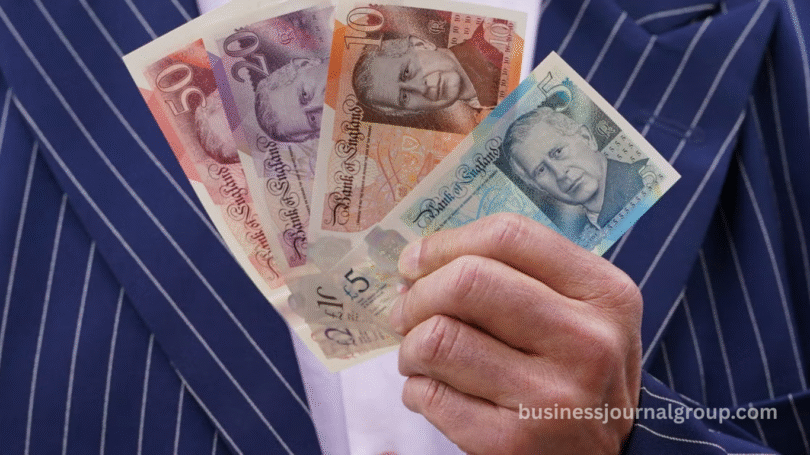In an unprecedented move, the Bank of England seeks banknote designs from the public in 2025, marking a significant shift in how Britain’s currency is visually represented. For the first time in history, the general public has been given a voice in shaping the national currency’s appearance a step that blends tradition with inclusive modernity.
The initiative is more than symbolic. It underscores the Bank’s commitment to engaging citizens, celebrating cultural identity, and promoting creativity. Whether you’re a budding artist, a student, or a history enthusiast, your design could one day be part of every British wallet.
This bold, inclusive project may transform how people view money, not just as a medium of exchange but as a canvas for national storytelling. The opportunity invites a collective reflection on British identity, diversity, and innovation.
Why Is the Bank of England Involving the Public?
The Bank of England’s call for public input in designing the next generation of banknotes coincides with a surge in public interest in national symbolism. Currency is not just a tool for transaction; it reflects cultural heritage, historical values, and societal evolution.
By inviting citizens to contribute to the design process, the Bank aims to:
- Strengthen the public connection with the currency.
- Ensure diverse representation on future banknotes.
- Bring transparency and inclusiveness to monetary symbolism.
This initiative follows previous public consultations around note subjects, such as selecting Alan Turing for the £50 note. However, the 2025 effort goes beyond suggestions citizens will now be able to directly submit design concepts.
Who Can Submit Banknote Designs?
One of the most exciting aspects of this initiative is that it’s open to nearly everyone. According to the Bank of England’s announcement, the call for submissions welcomes entries from:
- Individuals aged 13 and over
- Schools and colleges
- Independent artists and designers
- Community organizations
- Amateur enthusiasts
While professional experience is not required, the Bank will provide design guidelines, including note dimensions, color limitations, and themes. Participants must ensure that their submissions are original, relevant to the theme, and comply with technical standards.
The contest fosters equal opportunity, allowing fresh voices to challenge traditional design norms and add new depth to national symbols.
What Will the Theme for the 2025 Banknote Be?
The Bank of England has not yet confirmed the official theme, but has hinted that it will align with national pride, innovation, and cultural identity. Potential themes under consideration include:
- Celebrating British diversity
- Scientific innovation and discovery
- Art and literature in Britain
- Unsung heroes of British history
Final details will be released alongside the full design brief. The public can expect the theme to resonate widely, highlighting aspects of British life that are often overlooked in traditional representations of the country.
The Bank encourages artists to integrate symbolism, color theory, and storytelling, crafting a banknote that’s not only functional but emotionally meaningful.
The Evaluation and Selection Process
Once submissions close, a carefully selected panel will begin evaluating entries. The judging committee is expected to include:
- Senior Bank of England officials
- Art historians and design professionals
- Cultural figures and diversity advocates
Public representatives
The evaluation will be based on criteria such as:
- Artistic originality
- Alignment with the theme
- Cultural significance
Technical feasibility for printing
From the thousands of entries expected, a shortlist will be exhibited publicly both online and at select cultural venues across the UK. Final winners will be announced in early 2026, with the new banknote expected to enter circulation shortly thereafter.
Past Banknote Design Trends in the UK
The UK’s currency has undergone various transformations over the centuries, from engraved paper notes in the 17th century to the introduction of modern polymer notes in recent years. Designs have traditionally featured:
- Monarchs (Queen Elizabeth II, now King Charles III)
- Renowned historical figures (Churchill, Turing, Austen)
National landmarks and symbols
However, until now, public involvement has been limited. With the Bank of England seeking banknote designs from the public in 2025, a more democratic era of banknote artistry begins. This initiative reflects evolving expectations in a modern, multicultural society.
This change is also timely as digital art tools and online submission platforms make participation easier than ever.
Technical Guidelines for Design Submission
The Bank of England will release a complete design guide, but here are some expected requirements for 2025 submissions:
- Size Ratio: Must match the dimensions of existing polymer notes
- Color Scheme: Adherence to color standards that ensure anti-counterfeit printing
- Content: Must include mandatory design elements like denomination and security patterns
- File Format: High-resolution digital format (such as .TIFF or .PDF)
Additionally, designers must avoid:
- Political or commercial imagery
- Religious symbolism
- Offensive or culturally insensitive content
A technical team will review all shortlisted designs to ensure they meet the stringent quality and durability requirements for real-world usage.
How This Affects the Future of Currency Design
This move may set a new precedent not just in the UK but globally. If successful, public-driven banknote design could become the norm for future series, pushing governments to democratize more aspects of state representation.
Some possible long-term impacts include:
- Enhanced cultural engagement: Making money more relatable to everyday people
- Educational opportunities: Encouraging young artists to explore currency design
- Increased trust in institutions: As transparency fosters public confidence
Countries like Canada and New Zealand have explored similar routes, but the UK’s formalized approach for 2025 could become a gold standard for others to follow.
How to Get Involved: Step-by-Step
If you’re interested in participating in the 2025 banknote design initiative, here’s a quick roadmap:
- Monitor the official Bank of England website for theme and submission details.
- Download the design template and guidelines as soon as they become available.
- Create your design digitally or by hand (must be scanned in high quality)
- Submit your entry via the official portal before the deadline.
- Follow updates to see if your work is shortlisted.
Social media and regional news will also carry updates. Some schools and art collectives may run internal competitions to encourage participation.
Frequently Asked Questions
What is the deadline to submit banknote designs in 2025?
The Bank of England will announce the official deadline later this year. However, it is expected to fall around late Q4 2025, allowing time for review and production scheduling.
Can children submit banknote designs?
Yes, children aged 13 and above can submit designs individually. Schools may also participate as groups. A separate submission category for young artists is likely to be established.
Do I need professional design experience?
No professional background is required. The initiative is open to everyone, from amateur sketch artists to skilled graphic designers, as long as the design adheres to the submission guidelines.
Will my design be used precisely as submitted?
Final banknotes will be refined for security, durability, and printing purposes. The Bank’s in-house design team will adapt winning designs before release.
Will contributors receive recognition or payment?
Winners will receive public recognition, the potential for an exhibition of their work, and possibly a symbolic honorarium. However, full commercial compensation is not expected.
Can multiple entries be submitted?
Yes, individuals can submit more than one design, provided each design follows the guidelines and theme. Group submissions are also allowed.
What security features should I include?
Security elements, such as holograms, microtext, and UV elements, are typically added by the Bank’s production team. Designers should focus on visual and thematic elements.
How will the public be involved in choosing the final design?
The Bank of England plans to showcase the shortlisted designs in exhibitions and online polls to gather public sentiment, although the judging panel will make the final decisions.
Conclusion
The Bank of England’s 2025 public banknote design initiative is more than a creative contest it’s a call for cultural expression, community participation, and national storytelling. As the first step toward democratizing design for everyday currency, it could reshape how Britons engage with their financial identity. Whether you’re an artist, student, or someone with a story to tell, your vision could soon be part of history.



